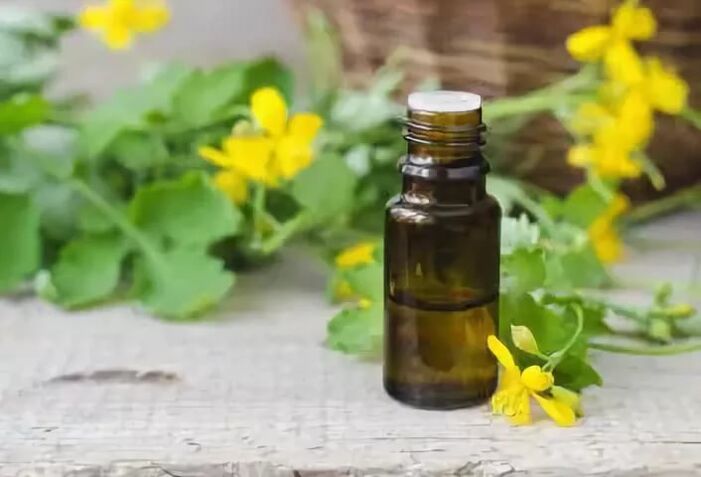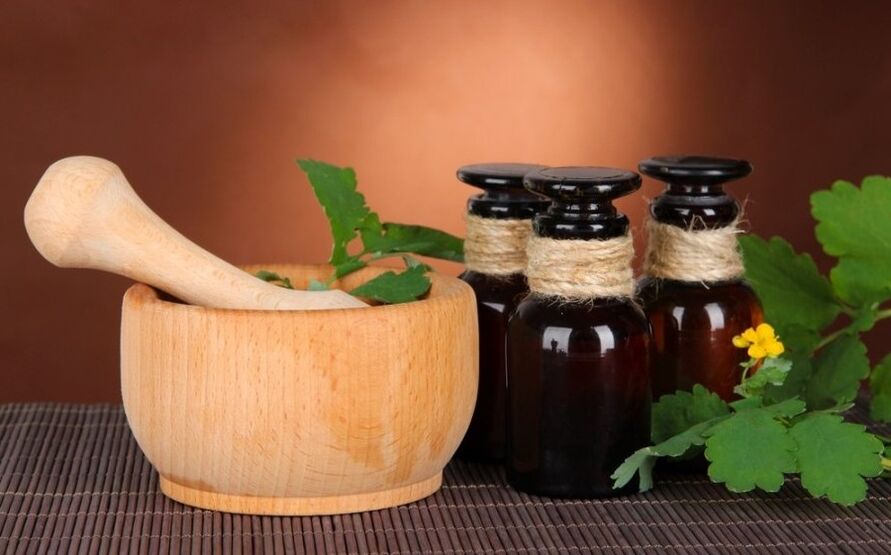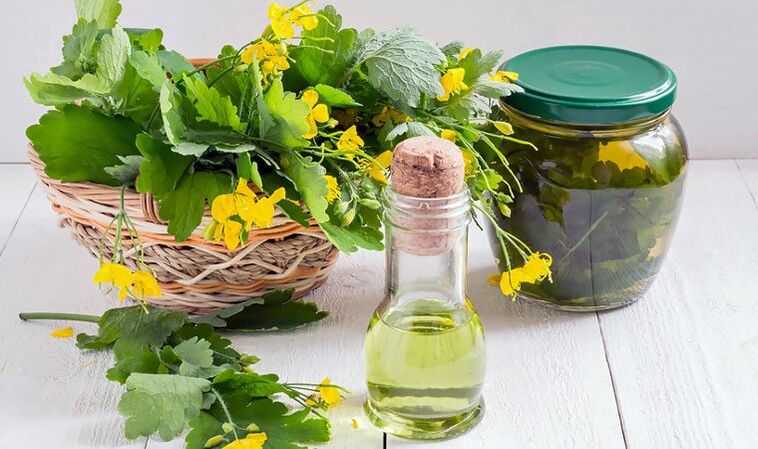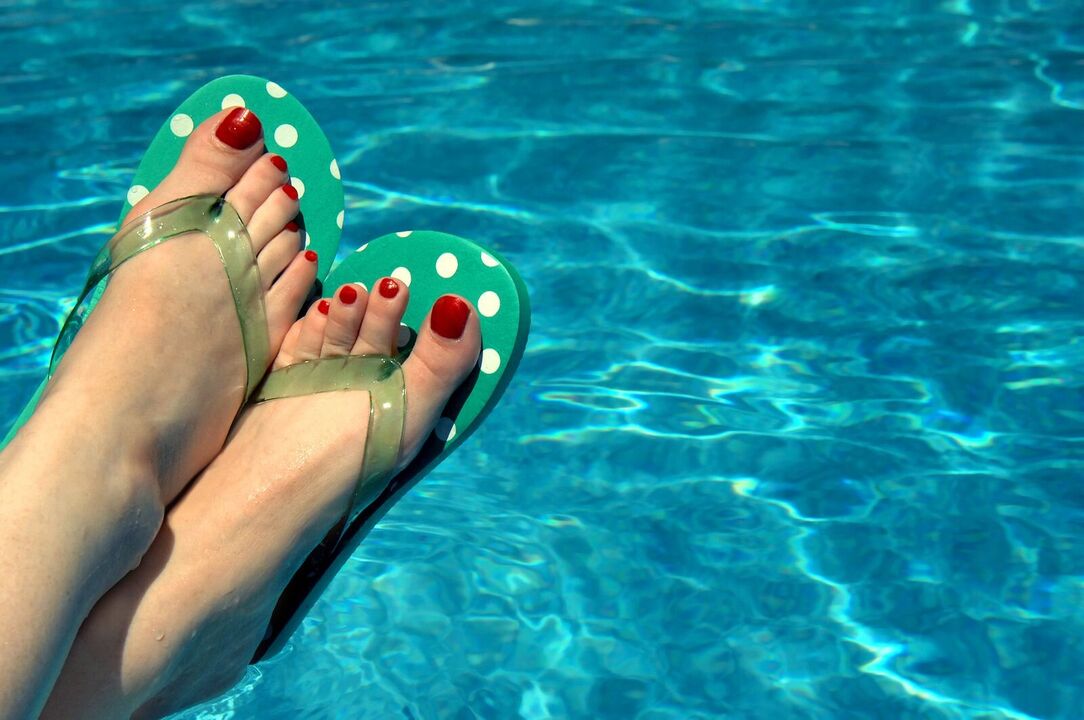
Fungal diseases of the nail should be treated when the first signs of the disease are detected, as the neglected disease will be more difficult to cope with. In addition, the infection can spread to other nails, the surrounding skin, and the folds between the fingers. If we talk about the treatment of this disease in the initial stage, it can be cured without medication using folk recipes. Thus, celandine from nail fungus is considered to be a particularly effective remedy.
Fungal infection of superficial tissues
The fungus on the nails feeds on the creatine in the plates. This leads to nail crumbling and discoloration.
It loses its shine, its elasticity, it can thicken or thin, it grows poorly and it is covered with waves. The disease most often affects the toenails, as the humid, warm environment in the shoes, sauna, bath, pool on the floor favors the fungus.
Often, pathogens are resistant to many of the drugs that pharmacies offer us to treat onychomycosis. As a result, therapy with these drugs does not produce the expected results and leads to a waste of money.
Many of the active ingredients in herbal preparations do not cause resistance in fungi and are therefore more effective than synthetic preparations.
This is why, since ancient times, various celandine-based baths, creams, oils and tinctures have been used to treat nails, to which many species of fungi are still not resistant.
Fungal infection can be eliminated particularly effectively with the use of celandine oil, as all active components are retained as much as possible.
Properties of celandine

Mountain celandine contains about 20 alkaloids as well as chelidonine, which slows the growth of microorganisms that cause various mycoses.
Thanks to alkaloids, they suppress the growth of fungal infections and the growth of protozoa and bacteria that are resistant to many antibiotics.
In addition, the composition of the plant contains the following active ingredients:
- tannin compounds;
- phenolic acids and organic acids;
- small amounts of essential oil;
- choline and histamine;
- carotene and vitamin C;
- enzymes;
- saponins;
- flavones.
Many alkaloids are more soluble in alcohols than in aqueous compounds. Berberine, which gives the juice of the plant a yellow color, only dissolves in hot water.
Before starting treatment of nail fungus with celandine, consult your doctor, as the alkaloids in this plant are toxic.
Of course, when applied topically, they do not have a toxic effect on the body, but if swallowed, they can have dangerous consequences.
You can buy liquid celandine from nail fungus at a pharmacy. Use only in extreme cases as it contains concentrated alkalis.
This device kills the cells with the microorganisms (fungi and viruses) that have settled in them. Therefore, this medicine should be used very carefully and only in the affected areas of the nail.
Celandine pharmaceutical preparations
Before treating fungal nail disease, you need to understand the characteristics and effects of medicines based on this plant. Due to the low volatile content of celandine, it is not made into an essential oil.
In cosmetology and pharmacology, oil extracts from the flowers of this herb are used.
The pharmacy oil extract contains almost a full set of FCS from this herb. This medicine is for external use only without dilution.
The therapeutic effect is explained by the cauterizing, antimicrobial and keratolytic effects of the drug on the affected skin and horny plaques.
Celandine oil extract hydrates, softens and cleanses the skin and horny formations, eliminating peeling, irritation and dehydration.
Nail fungus can be cured with this oil, but an allergy test should be performed before use as celandine can cause hives. To do this, oil is instilled on the skin of the wrist and the result is evaluated after a quarter of an hour.
If there is no itching, blisters, irritation or redness, it can be used for treatment.
Celandine-based ointment and oil
Celandine ointment and oily medicine from foot fungus and horn formation can be prepared at home or independently. To do this, do the following:
- You will need the top of the shoots of this plant. Cut and wash them thoroughly.
- Wait for the grass to wither a little, then grind and squeeze the juice out of it.
- Pour this juice into vegetable oil, boiled in a water bath for disinfection.
- The medicine should be infused in the dark for one hour.
- Then pour everything into a dark glass bottle and allow to infuse for up to three weeks.
- During this time, the oil tank must be shaken regularly.
- After this time, the oil is filtered and used for treatment.
It is not necessary to collect celandine in the field, in the yard, or in the woods. This plant can be grown in a box on the balcony. Dried grass from a pharmacy is also suitable for making oil. They cling to oil just as much as they do to fresh ingredients.
Powdered dry grass and medical Vaseline are used to make the ointment.
Some herbalists claim that only fresh grass helps against nail fungus. However, the extract of this plant has also been shown to have anti-inflammatory, analgesic and cauterizing properties.
The nail fungus is treated with celandine (oil and cream) as follows:
- We steam our feet in the evening. A little soda and soap can be added to the bath.
- Thoroughly dry the affected areas of the foot, nails and interdigital folds with a towel. The ingrown edge of the nail is cut off, and the softened affected areas of the nail plates are cut off with a nail file.
- Apply oil or ointment to a sore spot with a cotton swab or cotton swab.
- After that, we pull a nylon bag and socks on our feet.
- Allow the drug to act for ¾ hours. Then, before going to bed, rinse your feet with water and treat the affected nail plates with iodine.
Other means of celandine
Celandine for the treatment of nail fungus can be used in the form of tinctures and as part of combined therapies. The following are the most effective recipes:
- The clean juice of the plant should be wiped twice a day with diseased nail plates after treatment with hydrogen peroxide. After the first part of the juice has dried on the nail, the procedure is repeated twice more. Treatment is continued until recovery.
- Celandine-based complex mixture for the treatment of fungi. You will need two drops of oregano herb juice and marigold tincture, 5 drops of pure celandine juice and 120 g of water. This medicine should be applied to the affected nails with a cotton ball three times a day until healing.
- The alcoholic tincture is prepared as follows: the fresh plant is washed, dried and poured with vodka in a 1: 2 ratio. Infuse for twelve days. Thereafter, the treatment is started with 5 drops on each nail, increasing this amount to 20. The duration of therapy is up to two weeks.
- Baths with celandine. You will need 150 g of dry grass to be poured with boiling water (one and a half liters). The mixture should be infused for ¼ hours, then filtered and boiling water (0. 5 L) added to the infusion. Steam the feet in this water for about 20 minutes. After cleaning the plates of dead cells, the medicine prescribed by your doctor is rubbed in.
Many traditional healers recommend supplementing the treatment of the feet with celandine baths made with soda. To this 1000 ml of water (hot) take 30 g of baking soda.
The legs are steamed for a quarter of an hour, then the affected softened areas are carefully removed and a celandine-based treatment is applied. We bathe daily until we recover.
It is also good to rub hydrogen peroxide into the affected horn formations and then treat it with a mixture of herbal powder and tea oil.
Treatment with these methods can take anywhere from 6 months to a year. It takes so long for healthy nails to grow back.
During this time, foot hygiene should be observed and shoes should be disinfected regularly to avoid re-infection. You can use table vinegar or special sprays to treat your shoes.
Recipes with celandine

Celandine herb for the treatment of nail fungus with a compress:
- The fresh leaves are crushed.
- Add a drop of tea tree oil.
- The mixture is applied to the patient's nails and secured with adhesive film.
- The compaction is removed after 3 hours.
- It is allowed up to 3 times a week.
Celandine grass for mushroom applications:
- The leaves of the plant are placed in a jar and poured with sunflower or olive oil to cover the grass by a few centimeters.
- Store the mixture in a dark room for several hours, then leave the dish in a cool place for 2 weeks.
- The resulting oil is moistened with a cotton ball and placed on the affected area.
- Cover your fingers with adhesive film for 2 hours.
- The medicine is washed off and the foot is treated with an antiseptic.
Contraindications
Contraindications should be ruled out before treating nails. Pure juice and tincture of celandine is unacceptable in case of allergic reaction and hypersensitivity to the composition of the herb.
It is an absolute contraindication to the use of the drug during pregnancy and lactation, as well as in childhood.
You should monitor your skin reaction when taking celandine. In case of severe irritation, hyperaemia, rashes, you should omit this option for the treatment of nail fungus.
Celandine juice in its pure form is not recommended, so it should always be diluted with warm water, regardless of the recipe.
Celandine has a pronounced antiseptic effect, so it kills the microflora of all pathogens in a short time. Consult a dermatologist before using prescriptions with this poisonous plant. Your doctor will explain if you can treat nail fungus with celandine, what are the contraindications and risks.
Measures to prevent nail fungus

You can protect yourself from the fungus by simply following the rules of hygiene and timely preventive measures.
- Easy-to-wash slippers are available in all public areas (beaches, showers, changing rooms, swimming pools, spas, etc. ). Do not walk barefoot where there is a risk of catching the infection.
- We don’t wear anyone else’s shoes (including slippers at the party - it’s better to walk in socks).
- We do not use towels and manicure accessories from others.
- Leaving the bathroom, we put our feet not on a common (and often wet, not the first freshness) rug, but on our own towels (designated in advance for such purposes).
- Check your feet and nails regularly for signs of fungus. We take action for the slightest symptoms (cracks / itching between the fingers, discolouration of the nail, etc. ). That is, we buy ointments, special / varnishes, etc.
- We strive not to use shoes made of tight, narrow and poor quality materials.
- Our shoes are regularly treated with antiseptics from the inside.
- We use deodorants, rocking powders, etc. to prevent the feet from sweating.
- We only use cotton socks. If it is necessary to use stockings / stockings (products made of nylon and other synthetic fabrics), they should be taken off at home, the legs should be steamed and processed.
- We wear shoes that are open in the heat - for ventilation and free air exchange. Sweaty feet are a breeding ground for bacteria.
- We don't measure shoes without socks / footprints in stores - barefoot.
- After bathing, wipe your feet dry, including the gaps between your toes - this is where the fungus begins.
- We do not allow cracks in the legs - we use moisturizers.
- Wash your feet with mild antibacterial soap.
- When there is a high risk of infection (such as on holiday or in a swimming pool), use antifungal creams, powders or aerosols.
- Dry your shoes thoroughly if they get wet. We do not wear wet shoes / boots.
- Only proven salons are selected for the pedicure / manicure procedure.
- We will not allow the nails to be twisted, overgrown and deformed - we will take action in time.
























